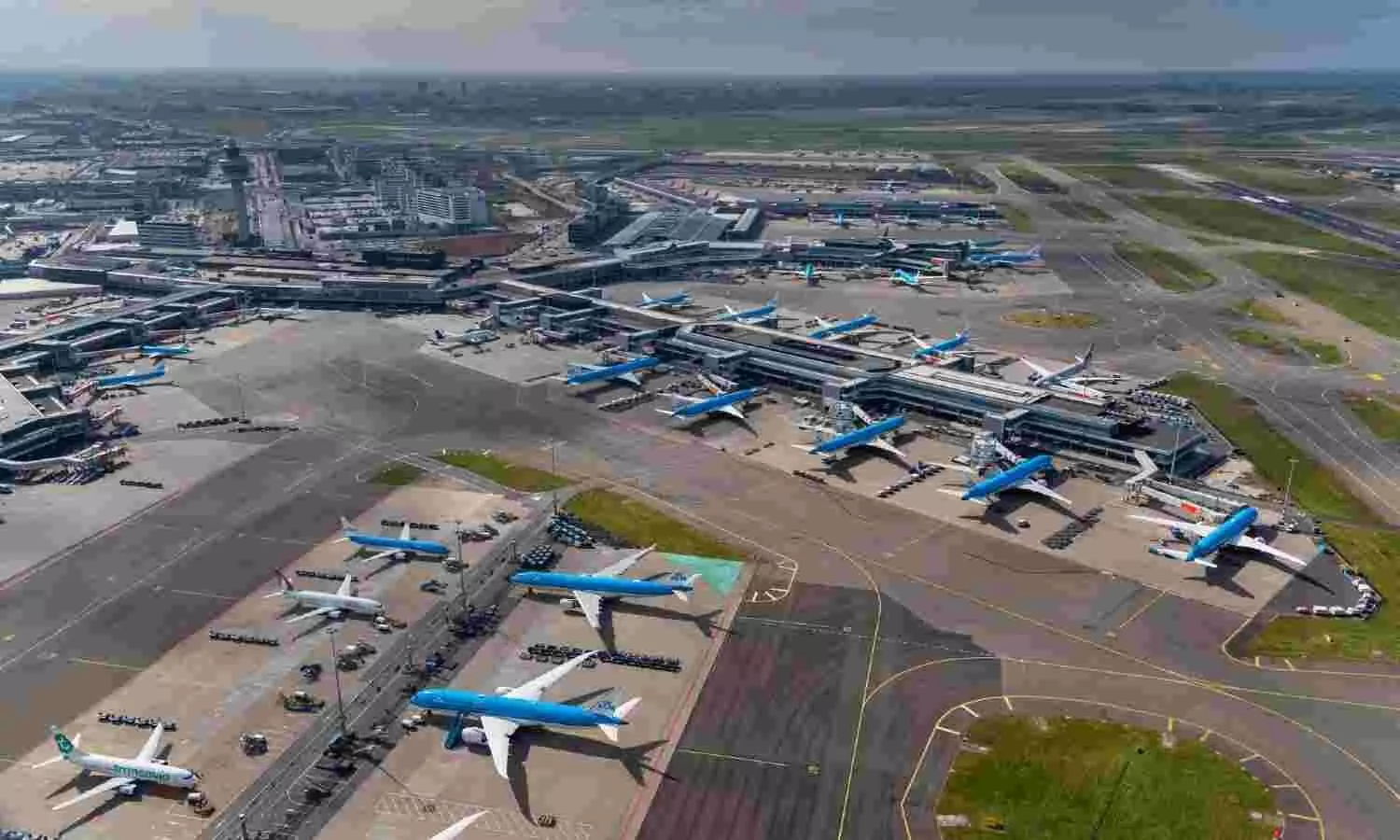
Amsterdam Airport Schiphol records an increase in 2021 cargo throughput
Freight volumes grew by 15.7 per cent compared to the previous year at Amsterdam Airport Schiphol, following the restructure of its cargo department

The main factors attributable to the growth were the return of sufficient slot availability at the airport and high demand
Amsterdam Airport Schiphol recently announced that the cargo throughput for 2021 escalated by 15.7 per cent to 1.66 million tonnes compared to 2020.
Last year, inbound cargo volumes increased by 15.2 per cent to 869,241 tonnes in 2021 compared to 2020, and outbound cargo volumes also increased by 16.1 per cent to 798,063 tonnes during the same period.
According to the report, Shanghai, China, Chicago, USA, and Dubai, United Arab Emirates were the top destinations for cargo by tonnage.
In 2021, freight volumes were shipped in two categories of flights: full freighters, which accounted for 67 per cent of total volumes, and passenger flights at 33 per cent of total volumes.
Market recovery
Outbound cargo to the Asian region from Schiphol increased by 8.7 per cent to 259,615 tonnes in 2021 compared to 2020, while inbound traffic from the region also went up by 4.9 per cent to 279,822 tonnes.
The outbound North American market increased by 22.1 per cent to 184,398 tonnes, with inbound traffic from here growing by 24.9per cent to 126,299 tonnes.
Cargo inbounds from Latin America increased by 11.4 per cent to 114,714 tonnes and outbound traffic to the region went up by 15.4 per cent to 84,116 tonnes.
European outbound traffic increased by 17.4 per cent to 100,246 tonnes, while inbound cargo increased 30per cent to 138,395 tonnes.
The Middle East market also told a positive story, with inbound cargo from the region up 16.2 per cent to 117,328 tonnes and outbound cargo up 30 per cent to 125,229 tonnes.
Outbound traffic to Africa increased by 4.2 per cent to 44,458 tonnes, with inbound traffic increasing 21.9 per cent to 92,683 tonnes.
Growth factors
The main factors attributable to the growth observed in 2021 were the return of sufficient slot availability at the airport and high demand.
New carriers, such as Vietnam Airlines, and returning airlines, such as MASKargo, have also been welcomed at Schiphol in 2021.
The end of 2021 saw some difficulties in terms of overall operational capacity at Schiphol owing to the high demand and capacity challenges experienced by the global air freight sector at large, but Schiphol has ensured improvement and swift problem-solving by setting up a taskforce with the supply chain partners that are situated at Schiphol Zuidoost.
"The 2021 figures are encouraging in light of the ongoing challenges of Covid on the operating environment," said Anne Marie van Hemert, Head of Aviation Business Development. "Last year, the cargo team formed a new Aviation Business Development Division, putting all airline and cargo commercial and operational business in a single department and introducing new faces.
"The newly established team has focused on accelerating our Smart Cargo Mainport Program and ensuring faster handling of export cargo, resulting in Digital Pre-notification for all ground handlers at Schiphol as the new standard.
"Going forward, the team will focus its efforts on securing Automated Nomination as the new standard, with sustainability a key driver behind this and all of our digitalization initiatives."
Focus on the future
A refreshed overall cargo strategy has been devised by Schiphol Airport for 2022 to tackle the challenges ahead, including capacity shortage, landside congestion, sustainability, security for valuable cargo, enforcement of smart Customs policies and digitalization.
By leading change, engaging in stakeholder co-operation, defining minimum standards, communicating the importance of these efforts and taking concrete actions towards its overall goal, Schiphol aims to be a competitive and sustainable cargo hub.
Schiphol Cargo's overall strategy centres around five key pillars:
1. Optimizing connectivity to be the best-connected airport with a strong long-haul network
2. Orchestrating seamless cargo processes to enable a predictable cargo flow
3. Contributing to Schiphol's goal to be a sustainable cargo hub
4. Ensuring safe and secure operations, so that valuable cargo is protected
5. Realizing state-of-the-art digitalization and improving IT as a pre-requisite to achieve all of these goals
This year will also see the continued modernization of airport cargo information platform Cargonaut's Port Community System under the flag of Schiphol.
The airport has furthermore worked with stakeholders and partners on the development of the local rule 2, which states that slots that are given back or re-delivered will be prioritised for cargo flights.
Approval for this is being sought from the ministry and ACNL, and the work is hoped to be finalized this year.
"Schiphol looks forward to maintaining the momentum started in 2021 this year, accelerating efforts with all our innovative, digital, and sustainable initiatives that will lead to a safer, more reliable and more efficient cargo flow at Amsterdam Airport Schiphol. Together, we want to shape Europe's smartest cargo hub," said van Hemert.

